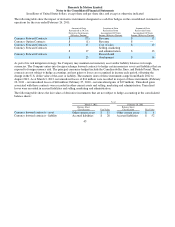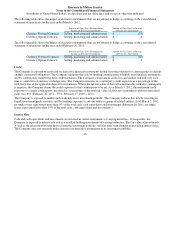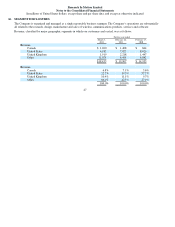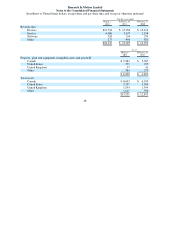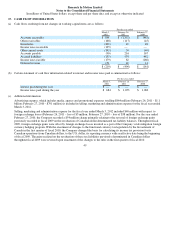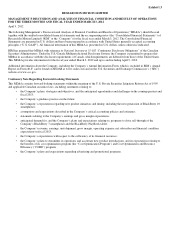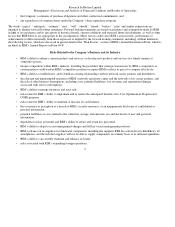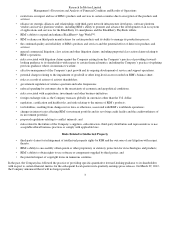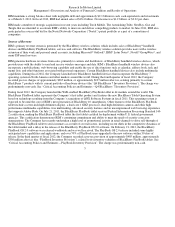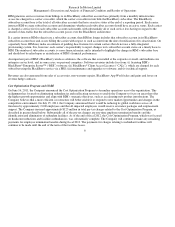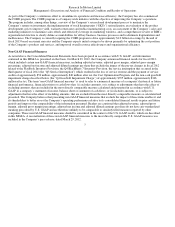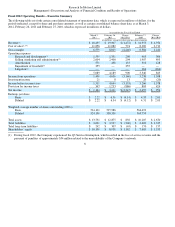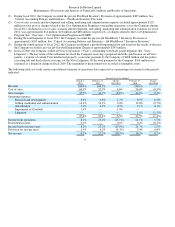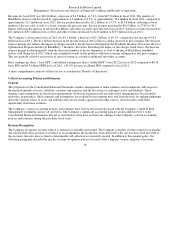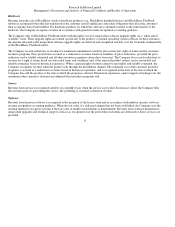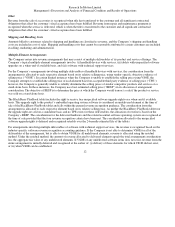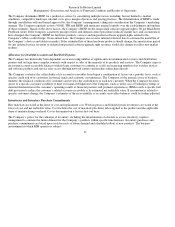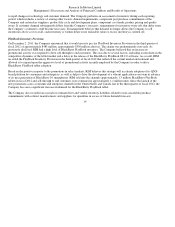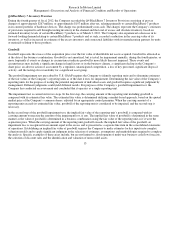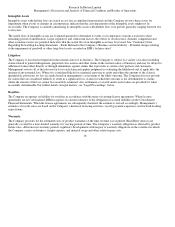Blackberry 2012 Annual Report Download - page 176
Download and view the complete annual report
Please find page 176 of the 2012 Blackberry annual report below. You can navigate through the pages in the report by either clicking on the pages listed below, or by using the keyword search tool below to find specific information within the annual report.
Research In Motion Limited
Management’s Discussion and Analysis of Financial Condition and Results of Operations
RIM generates service revenues from billings to its BlackBerry subscriber account base primarily from a monthly infrastructure
access fee charged to a carrier or reseller, which the carrier or reseller in turn bills the BlackBerry subscriber. The BlackBerry
subscriber account base is the total of all subscriber accounts that have an active status at the end of a reporting period. Each carrier
instructs RIM to create subscriber accounts and determines whether each subscriber account should have an active status. Each carrier
is charged a service fee for each subscriber account each month, with substantially all of such service fees having no regard to the
amount of data traffic that the subscriber account passes over the BlackBerry architecture.
If a carrier instructs RIM to deactivate a subscriber account, then RIM no longer includes that subscriber account in its BlackBerry
subscriber account base and ceases billing the carrier with respect to such account from the date of notification of its deactivation. On
a quarterly basis, RIM may make an estimate of pending deactivations for certain carriers that do not use a fully-integrated
provisioning system. It is, however, each carrier’s responsibility to report changes to its subscriber account status on a timely basis to
RIM. The number of subscriber accounts is a non-financial metric and is intended to highlight the change in RIM’s subscriber base
and should not be relied upon as an indicator of RIM’s financial performance.
An important part of RIM’s BlackBerry wireless solution is the software that is installed at the corporate or small- and medium-size
enterprise server level, and in some cases, on personal computers. Software revenues include fees from: (i) licensing RIM’s
BlackBerry Enterprise Server™ (“BES”) software; (ii) BlackBerry Client Access Licenses (“CALs”), which are charged for each
subscriber using the BlackBerry service via a BES; (iii) maintenance and upgrades to software; and (iv) technical support.
Revenues are also generated from sales of accessories, non-warranty repairs, BlackBerry App World sales and gains and losses on
revenue hedge contracts.
Cost Optimization Program and CORE
On June 16, 2011, the Company announced the Cost Optimization Program to streamline operations across the organization. This
realignment has focused on eliminating redundancies and reallocating resources to enable the Company to focus on areas that offer
the highest growth opportunities and align with RIM’s strategic objectives, such as accelerating new product introductions. The
Company believes that a more efficient cost structure will better enable it to respond to new market opportunities and changes in the
competitive environment. On July 25, 2011, the Company announced that it would be reducing its global workforce across all
functions by approximately 2,000 employees and that all impacted employees would receive severance packages and outplacement
support. The Company incurred approximately $125 million in total pre-tax charges related to the Cost Optimization Program, as
described in greater detail below. Substantially all of the pre-tax charges are one-time employee termination benefits and the
identification and elimination of redundant facilities. As of the end of fiscal 2012, the Cost Optimization Program, which was focused
on headcount reductions and facilities redundancies, was substantially complete. The Company will continue to make any remaining
payments for employee termination benefits during fiscal 2013. The payments for charges relating to redundant facilities will
continue to be made until the end of the term of the facilities leases.
6
® ®


